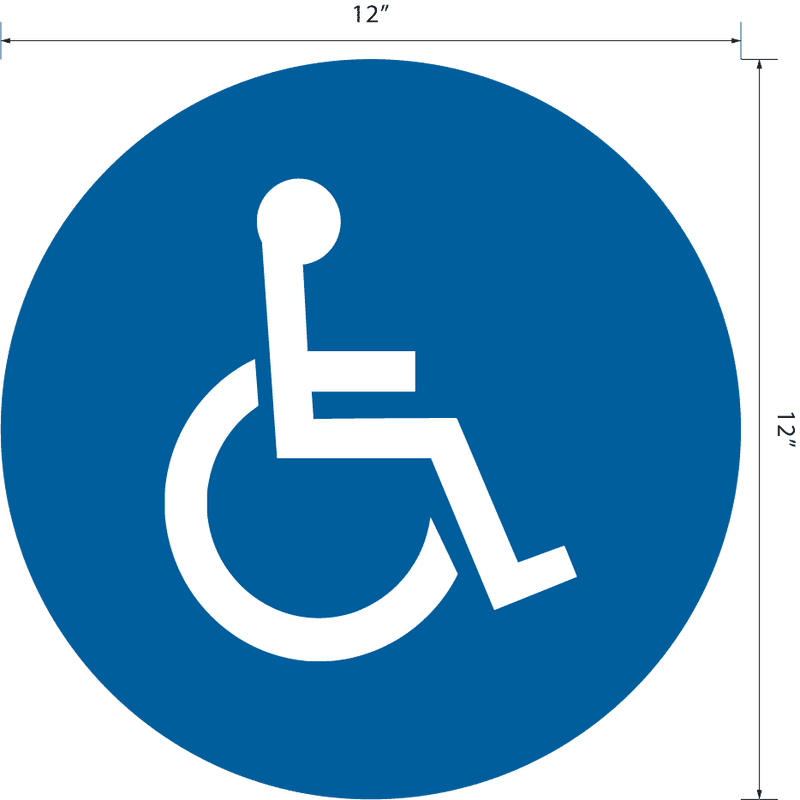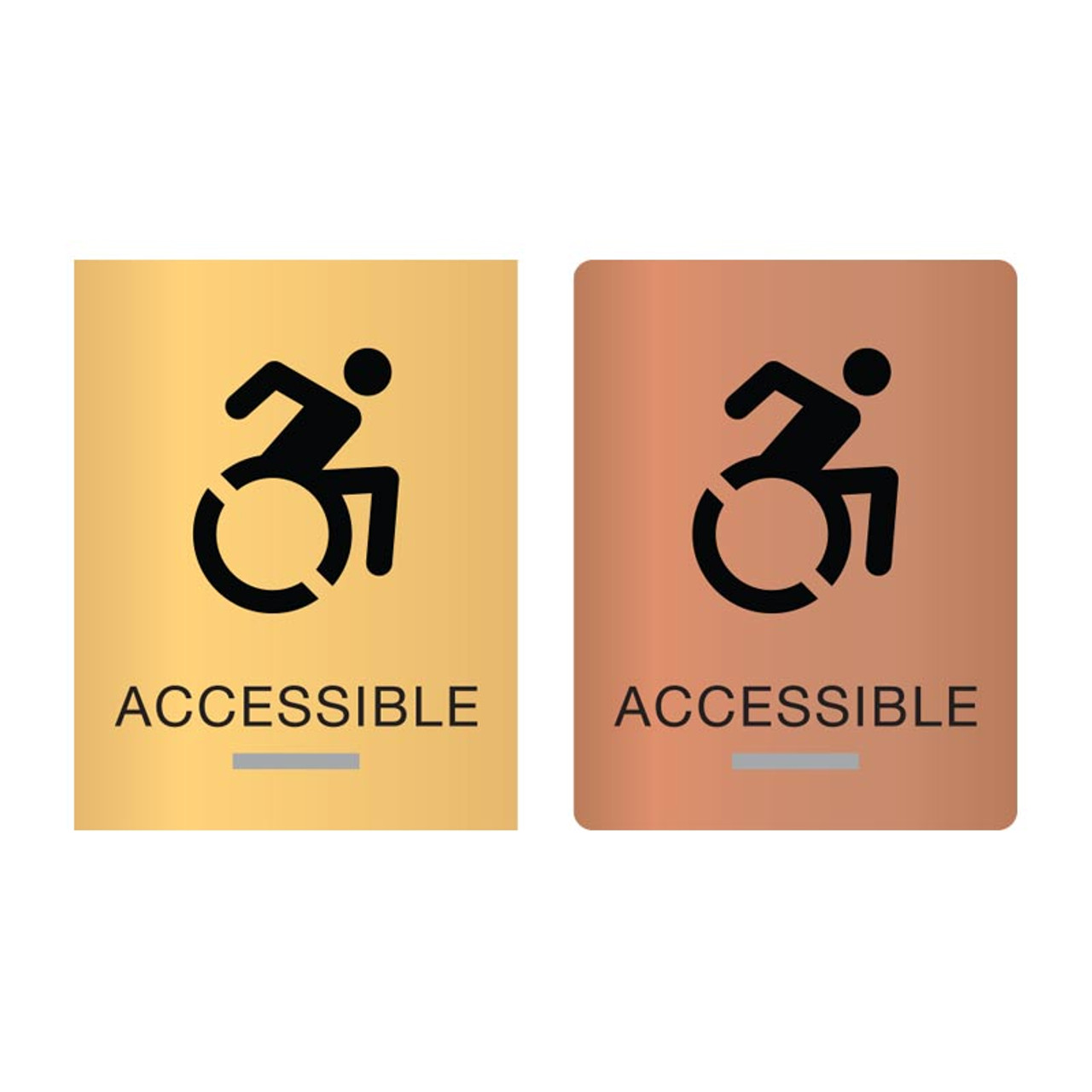Comprehending the Regulations Behind ADA Signs
Comprehending the Regulations Behind ADA Signs
Blog Article
Just How ADA Indicators Change Spaces for Individuals With Specials Needs
The change of spaces via ADA indicators for people with specials needs is an extensive testament to the power of accessibility. By sticking to ADA conformity, atmospheres come to be secure and accessible, with signs that function necessary aspects like high-contrast colors and Braille, thus enhancing visibility and understanding. Beyond simple performance, these signs add to area incorporation, offering a feeling of empowerment and belonging. As we look in the direction of future patterns in easily accessible signage, one have to take into consideration how progressing technologies may even more reinvent these spaces. What obstacles and chances exist ahead in guaranteeing these areas continue to be inclusive for all?

Value of ADA Compliance
Making sure ADA compliance is not only a lawful responsibility but also a social dedication to inclusivity and access. By sticking to the standards set forth in the Americans with Disabilities Act (ADA), organizations show their commitment to creating environments where individuals with specials needs can navigate and engage without obstacles. ADA compliance is critical in getting rid of discrimination, cultivating equal rights, and promoting self-reliance for individuals with specials needs.
Organizations and public establishments profit considerably from ADA compliance. By making certain facilities are obtainable to everybody, companies can bring in a broader consumer base, including the 61 million Americans living with impairments.
In addition, ADA compliance is a foundation of universal design, which highlights developing rooms that suit all people, no matter their capabilities. By carrying out certified signage and features, organizations contribute to an extra fair society, where all members can participate fully. Eventually, ADA compliance transcends lawful responsibility, embodying a social worth that focuses on empowerment and equal chance for everyone.
Enhancing Navigating and Safety And Security
Navigating rooms with self-confidence and safety is vital for individuals with impairments, and ADA-compliant signs plays a pivotal role in attaining this objective. These signs are developed with specific functions to satisfy the diverse needs of people with different specials needs, therefore helping with smoother and safer navigation throughout personal and public rooms. By supplying clear, standardized information, ADA indications minimize complication and advertise a better feeling of self-reliance for individuals that count on them.
The tactical positioning of ADA indicators makes certain that necessary info is easily accessible to every person, including those with aesthetic, auditory, or cognitive disabilities. For instance, responsive and Braille aspects on indicators assist visually damaged individuals separately locate exits, bathrooms, and other key areas. In emergency situations, ADA indicators add to effective discharges by clearly noting fire escape and courses, thus boosting security for all residents.
Moreover, ADA-compliant indications promote an inclusive atmosphere by resolving the distinct navigating obstacles faced by people with handicaps. This not just help in their personal safety yet additionally urges engagement in societal tasks by advertising equivalent access to civil services and facilities. Eventually, effective ADA signage changes rooms into accessible, risk-free, and welcoming environments for everybody.
Attributes of Efficient ADA Indicators
To develop effective ADA signs, it is important to integrate certain features that resolve the varied ease of access demands of individuals with handicaps. One important function is the usage of high-contrast shades, which dramatically enhance exposure for people with aesthetic problems. The history and text ought to contrast sharply to ensure the information is conveniently discernible. In addition, the text has to be in a sans-serif font style, as these font styles provide clearer readability at a range.
One more vital feature is responsive components, such as elevated characters and Braille, facilitating access for aesthetically impaired individuals. The increased personalities should go to least 1/32 inch above the surface area, permitting easy touch reading. Braille must be placed straight below matching message, guaranteeing consistency and ease of wikipedia reference navigating.
The placement of ADA signs is likewise essential for their effectiveness. By incorporating these attributes, ADA indicators can considerably boost wayfinding and availability for all.
Impact on Area Addition
ADA signs significantly add to neighborhood incorporation by making certain that public areas are navigable and obtainable for individuals with impairments. These indicators, created in compliance with the Americans with Disabilities Act (ADA), feature tactile aspects, braille, and high-contrast colors, assisting not only those with visual problems yet a varied series of disabilities - ADA Signs. Consequently, they play a pivotal role in producing settings where people with handicaps can participate fully and separately in area life

Moreover, ADA indications help organizations and establishments fulfill legal responsibilities, consequently preventing prospective discrimination claims and boosting their reputations as comprehensive entities. Inevitably, ADA indications are indispensable tools in the ongoing effort to develop even more fair and easily accessible communities for every person.
Future Trends in Accessible Signs
The assimilation of cutting-edge technologies assures to transform just how individuals with specials needs engage with their atmospheres. Digital indicators furnished with sensing units and connectivity can engage with personal tools helpful resources to provide personalized details, such as text-to-speech for aesthetically damaged individuals or streamlined graphics for those with cognitive impairments.
Enhanced reality (AR) additionally holds significant possibility. AR applications can overlay electronic details onto real-world environments, providing customers with enhanced navigational help and contextual information (ADA Signs). This can be specifically advantageous in intricate settings like flight terminals or large public places where typical signage might drop short
One more emerging fad is the unification of Web of Things (IoT) modern technology to develop a network of interconnected indicators. This enables for real-time updates and boosted ease of access, adjusting to changes in the environment or user requirements. Additionally, with the expanding focus on inclusivity, future laws might promote much more advanced signage services, ensuring universal gain access to and cultivating a website link much more comprehensive society for all individuals.
Verdict
ADA indicators play an important duty in transforming areas for individuals with specials needs by ensuring availability and promoting independence. Compliance with ADA standards enhances navigating and safety and security via the use of high-contrast shades, tactile aspects, and Braille.
The change of rooms via ADA indications for people with disabilities is a profound testimony to the power of accessibility.To produce reliable ADA signs, it is essential to include particular attributes that address the diverse accessibility needs of people with disabilities.ADA indicators substantially add to area inclusion by guaranteeing that public spaces are accessible and navigable for people with handicaps.By helping with the ease of movement and understanding within public areas, ADA indicators promote a sense of belonging and empowerment among people with impairments.ADA signs play an important function in transforming areas for people with impairments by making certain access and advertising independence.
Report this page